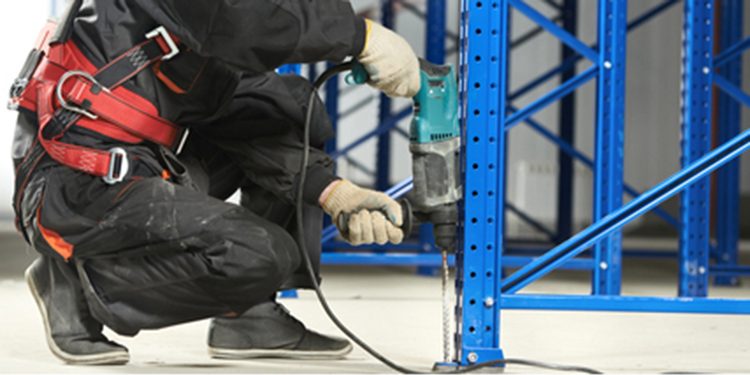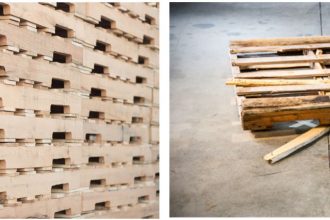Base Plates And Anchors: The Foundation Of A Solid Rack Structure

Without base plates (sometimes called foot plates) at the bottom of every rack column to provide a surface for anchor bolts to grip when drilled into the floor, industrial steel pallet racks would slide or fall over in the event of an impact. Critical to the structural integrity of the rack, they provide the connection surface for the anchor bolts, the mechanism by which pallet rack columns are secured to the floor.
As required by Section 1.4.7 of ANSI MH16.1: Specification for the Design, Testing and Utilization of Industrial Steel Storage Racks, “Column Base Plates and Anchors,” these key rack components are designed and engineered to resist the forces experienced at the base of a column. In addition to the downward forces generated by the weight of the stored loads, a rack’s stability is also susceptible to uplift forces caused by a forklift collision or to seismic forces caused by an earthquake or wind forces. Column base plates and anchors work together to keep the racking structure in an upright position, reducing the risk of a collapse and improving the safety of personnel working in the area.
Provided they are properly connected to the column, base plates accept these concentrated forces and distribute them uniformly over their bearing surface. Section 7.1 of the ANSI MHI16.1: Specification, “Column Base Plates,” discusses the requirements for racks installed on concrete floors in more detail, including the calculations required of the rack manufacturer to determine the thickness and dimension of the plates. These calculations must account for the downward vertical load, uplift and axial load (plus bending) in order to determine a large enough bearing area. Further, Section 7.3 of the ANSI MHI16.1: Specification, “Anchor Bolts,” requires the rack engineer to calculate and specify the length and number of anchors used to secure each base plate to the floor.
Depending on the requirements of the installation site, base plates can range in size from 3 x 5 x 0.125 inches up to 12 x 12 x 0.75 inches or larger for tall systems in seismic zones. It is incumbent upon the rack manufacturer or professional rack engineer to detail the quantity, brand and size of the anchor bolts to be used in the rack installation. The professional rack engineer will also specify how many holes within each base plate are to be used (most base plates include extra holes to accommodate obstructions in the floor, such as reinforcement). Additionally, columns being anchored near floor expansion joints require special attention.
Have more questions about safe rack design? Additional information can be found in RMI’s publication, “Considerations for the Planning and Use of Industrial Steel Storage Racks.”


